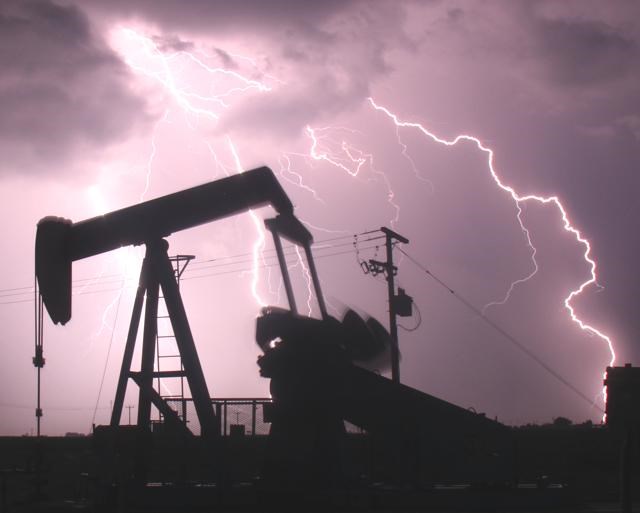New oil and gas megaprojects worldwide are getting the green light as global energy demand surges – new ones outside of Canada, that is.
Total world spending on oil and gas production and liquefied natural gas () is expected to to about US$456 billion, up from US$418 billion in 2021, according to Norway-based energy research firm Rystad Energy.
Australia and the Middle East will stand out, Rystad analysts said.
Spending in Canada is also compared to last year, to US$26 billion in 2022 compared to US$21 billion in 2021, according to the Canadian Association of Petroleum Producers (CAPP). But that investment will mainly support drilling and optimization of existing facilities rather than new major projects.
Companies continue to spend less in Canada compared to other places around the world. This year’s investment in Canada is about six per cent of the global total, down from about 10 per cent in 2014, CAPP says.
This represents a significant lost opportunity in Canada for . According to , for each dollar in lost gross domestic product in the oil and gas industry, $1.14 is lost in other industries. And for each job lost in oil and gas, six are lost in other sectors.
Here’s a look at just five oil and gas megaprojects going ahead around the world.
Uganda – Lake Albert oil project
TotalEnergies, CNOOC (US$10 billion)
France-based TotalEnergies and China National Offshore Oil Corp. (CNOOC) are lead partners in a that will make the country an oil producer and exporter for the first time.
The US$10-billion Lake Albert project will develop the Tilenga and Kingfisher oil fields in Uganda and involve the construction of the East African Crude Oil Pipeline in Uganda and Tanzania.
At 1,443 kilometres, it will be the oil pipeline. It will deliver crude to Tanzania’s Port of Tanga, on the west of the Indian Ocean.
Production is expected to reach 230,000 barrels per day, with the first oil exports in 2025.
Australia – Scarborough/Pluto 2 gas project
Woodside Petroleum (US$12 billion)
Australia’s Woodside Petroleum is leading a new integrating upstream production with LNG exports.
The US$12-billion project in Western Australia will involve the development of the Scarborough natural gas field, located about 375 kilometres offshore, and an expansion of the existing onshore Pluto LNG terminal. A new 430-km connecting pipeline will also be constructed.
The projects are expected to deliver eight million tonnes per year of LNG supply to customers in north Asia, with the first LNG cargo targeted for 2026.
India – oil refining expansion
Indian Oil Corp. (US$13.5 billion)
State-owned Indian Oil Corp. is moving to provide more refined products as demand in the country increases.
The company at its 2021 shareholder meeting, against the backdrop of Indian oil consumption expected to rise to as high as 8.4 million barrels per day in 2040 compared to 4.7 million barrels per day today.
“To cater to that demand surge, we are aggressively rolling out new projects,” said Indian Oil chairman Shrikant Madhav Vaidya.
The company will spend about US$13.5 billion to significantly increase oil refining capacity in the next four to five years, by about 450,000 barrels per day.
Saudi Arabia – Jafurah Gas Field
Saudi Aramco (US$100 billion)
Giant Saudi Aramco has the massive Jafurah natural gas play, one of the largest in the Middle East.
The company anticipates spending more than US$100 billion over the total lifecycle of the play. By 2030, production is expected to reach up to two billion cubic feet per day of sales gas and around 630,000 barrels per day of gas liquids and condensate, which can be used to make gasoline.
Russia – Vostok Oil
Rosneft (US$170 billion)
Work is advancing on Rosneft’s massive Vostok project, which the Russian state-owned company describes as the world’s largest investment in oil and gas.
In November, Rosneft announced progress on early work to build a massive new oil terminal in the port of Bukhta Sever. More than 145,000 tonnes of various construction cargoes have been delivered using 15 ocean vessels, the company said. When the terminal is complete, it will have nearly 1.3 km of docking and waterfront.
The Vostok project is expected to deliver about 600,000 barrels per day to tankers on Russia’s Northern Sea Route by 2024. With the completion of the first phase, that will increase to approximately one million barrels per day, and two million barrels per day with the completion of the second phase. The full cost is expected to be as high as $170 billion.
Deborah Jaremko is director of content for the , an Alberta government corporation funded in part by taxes paid by industry on carbon emissions.
©





